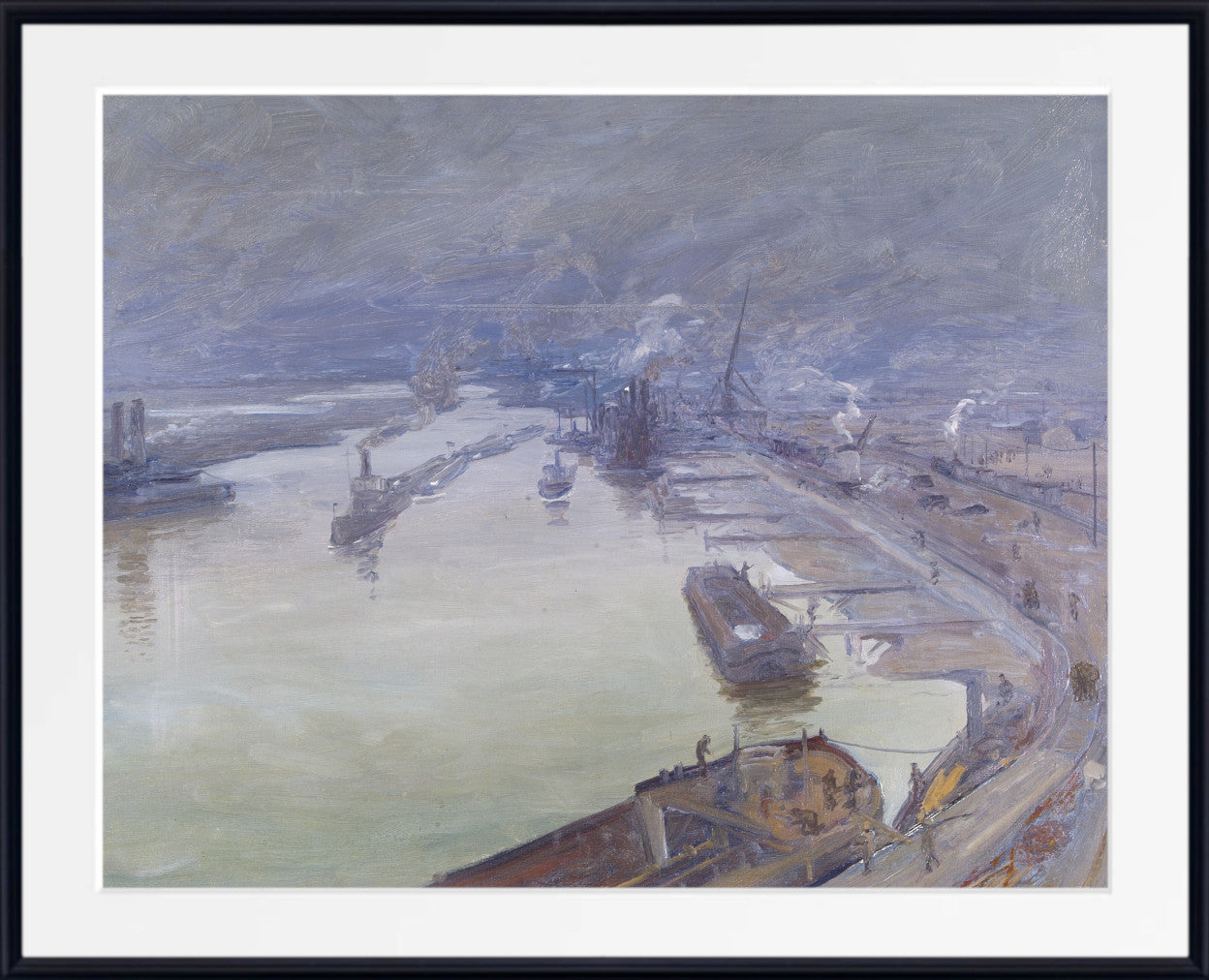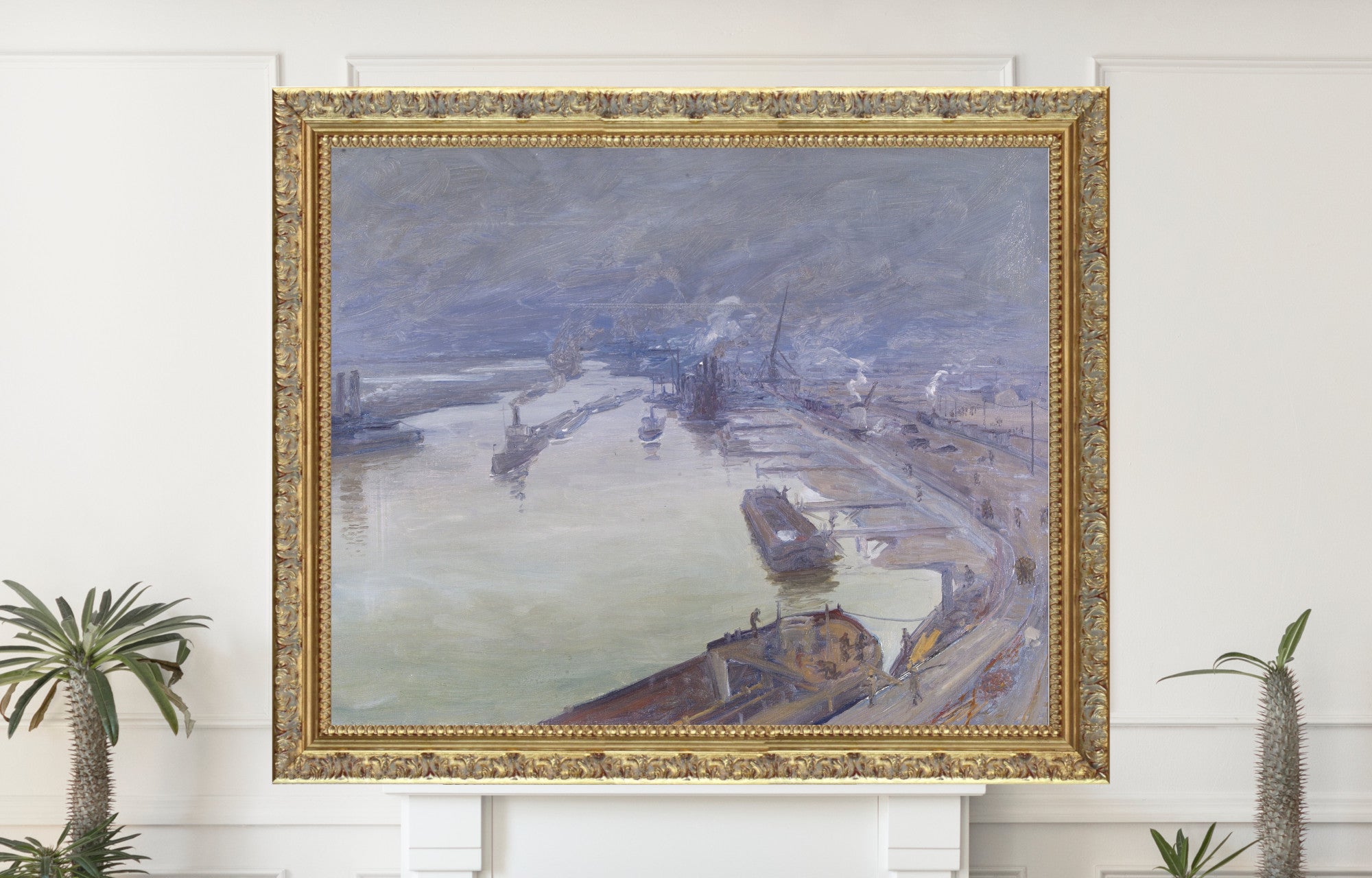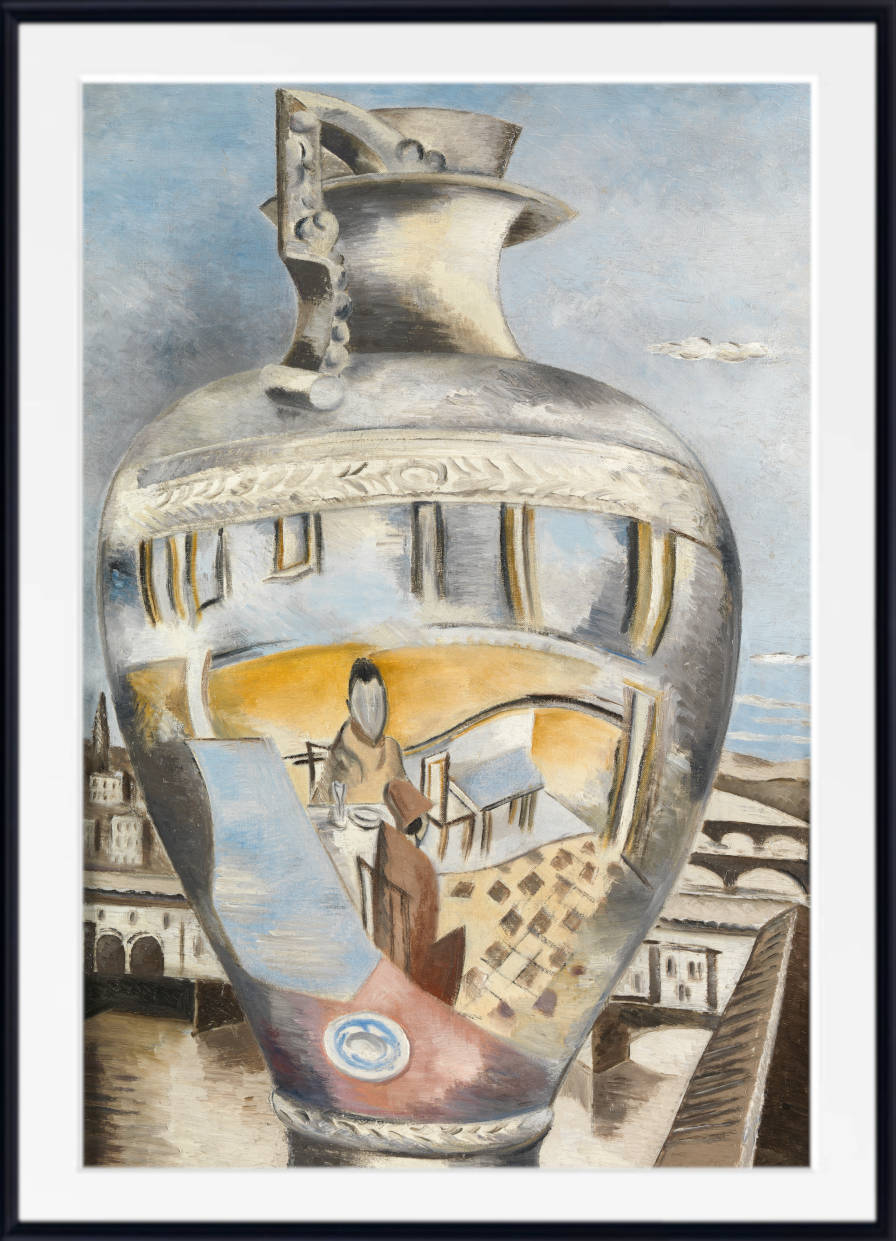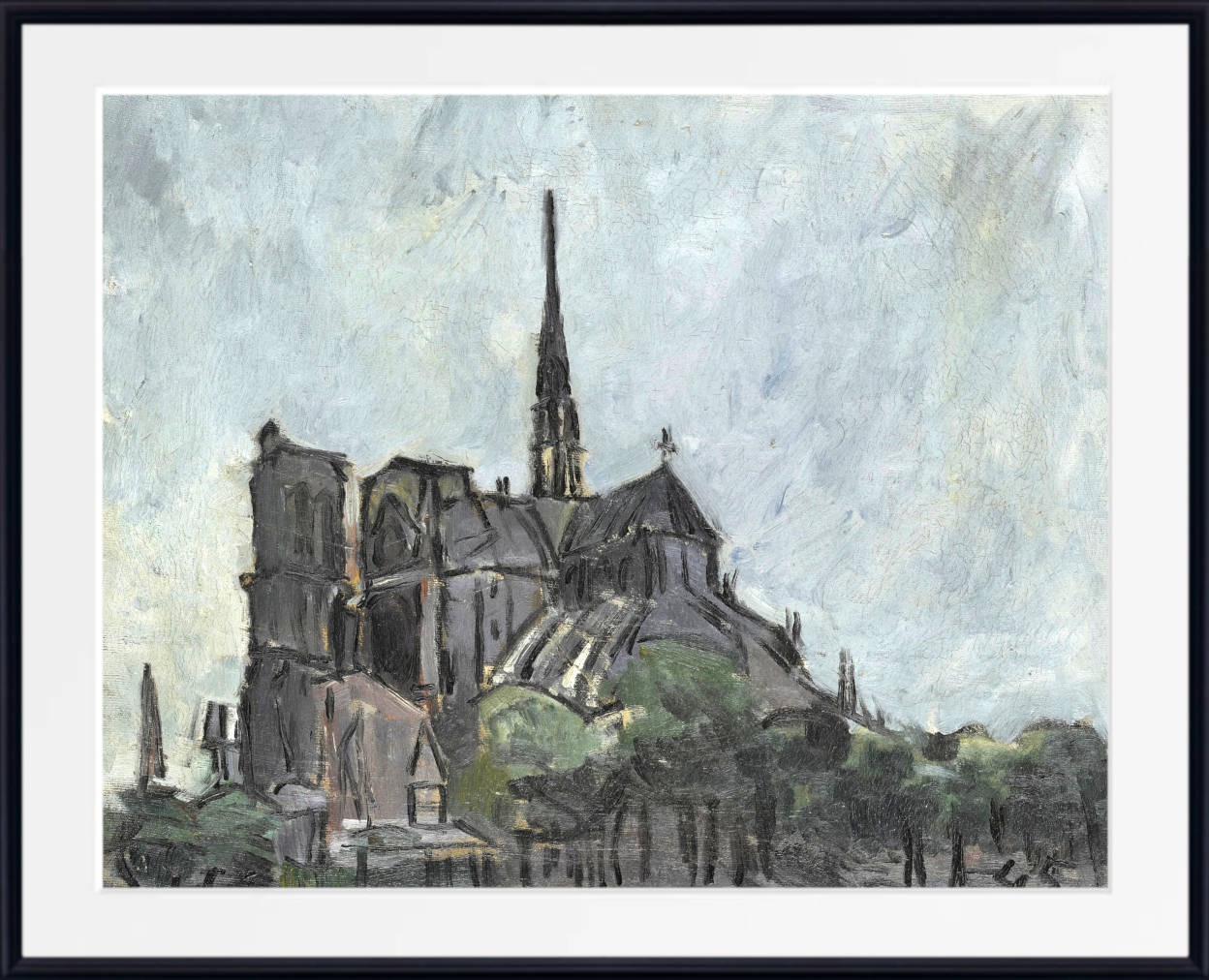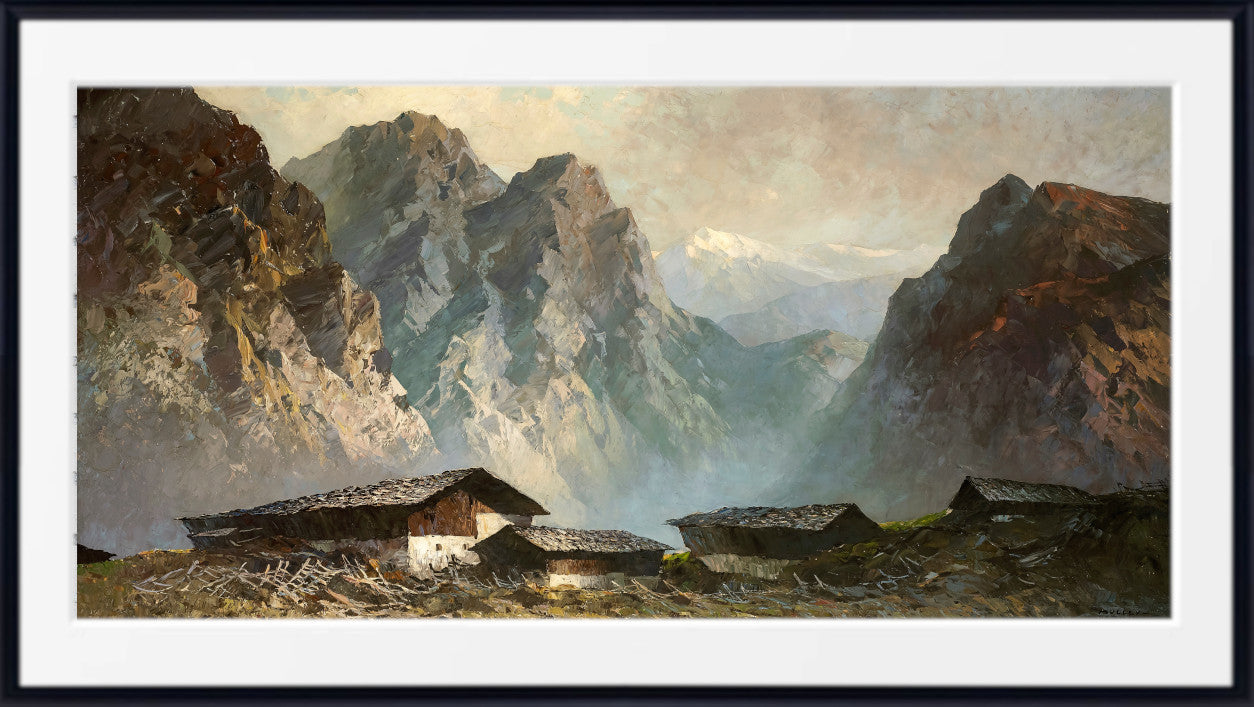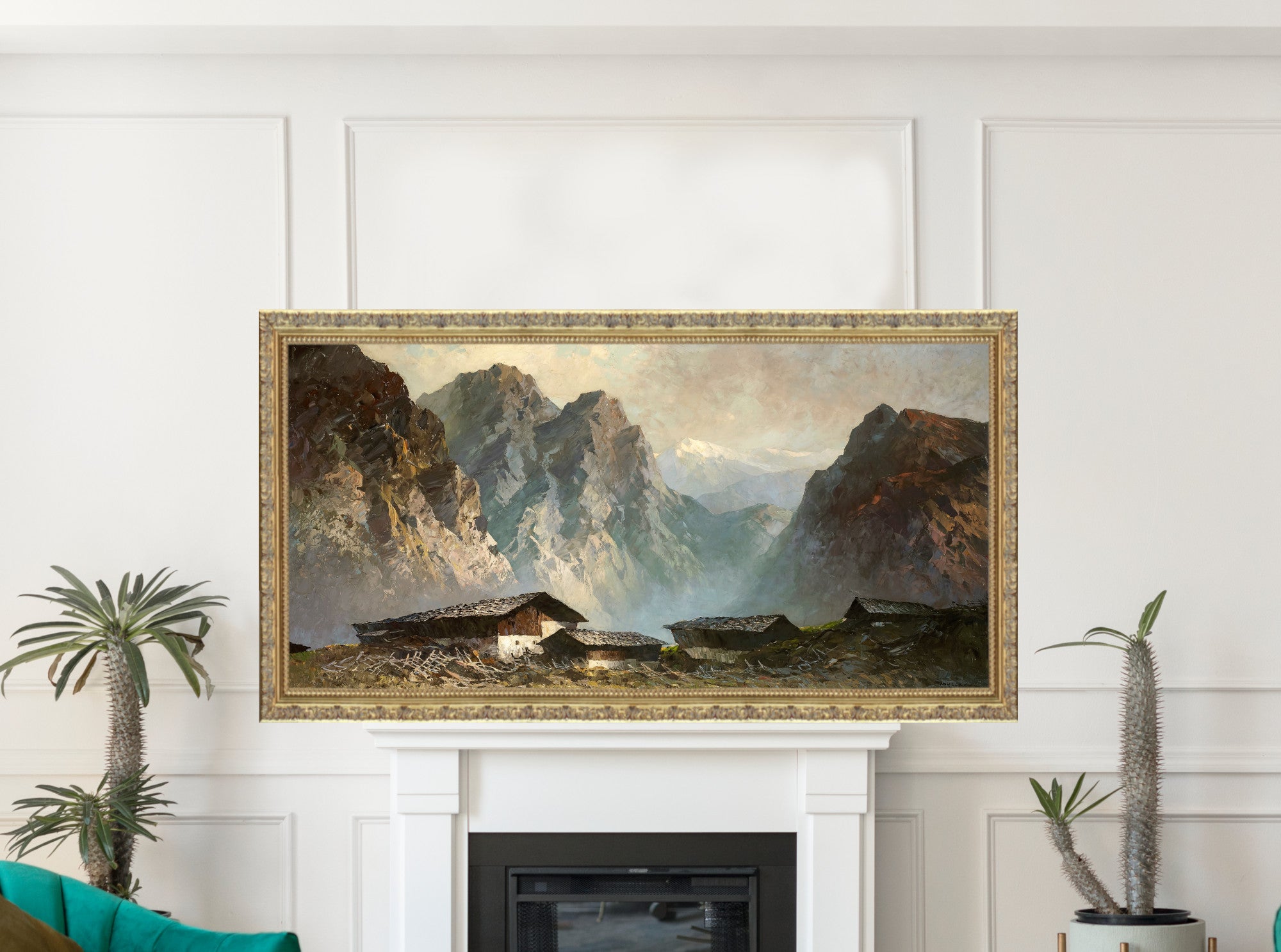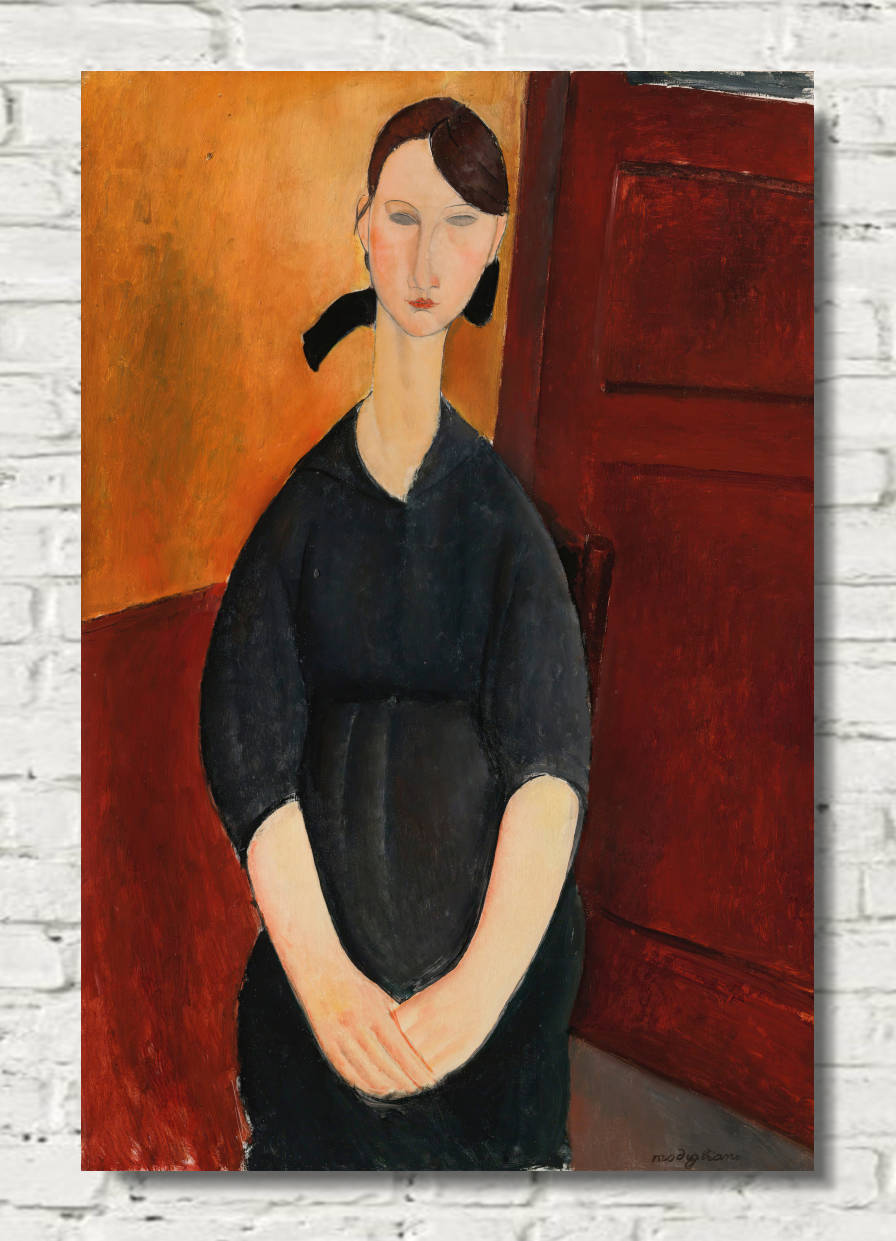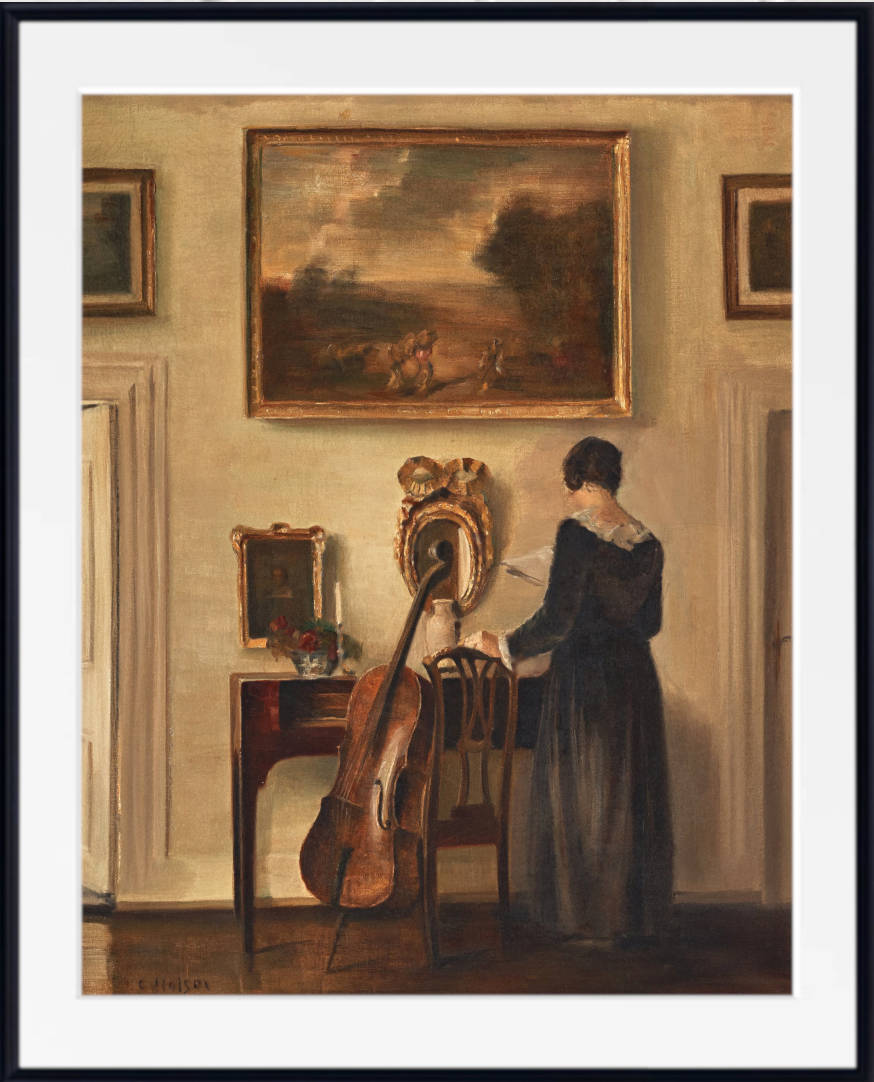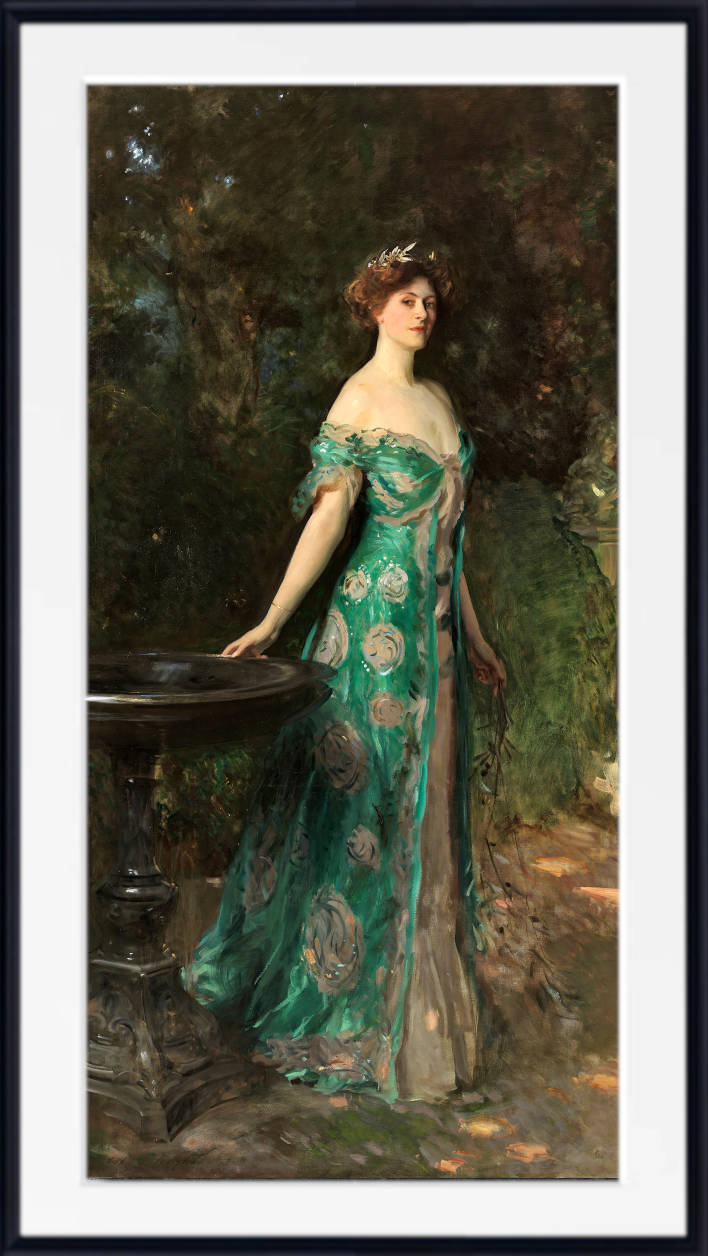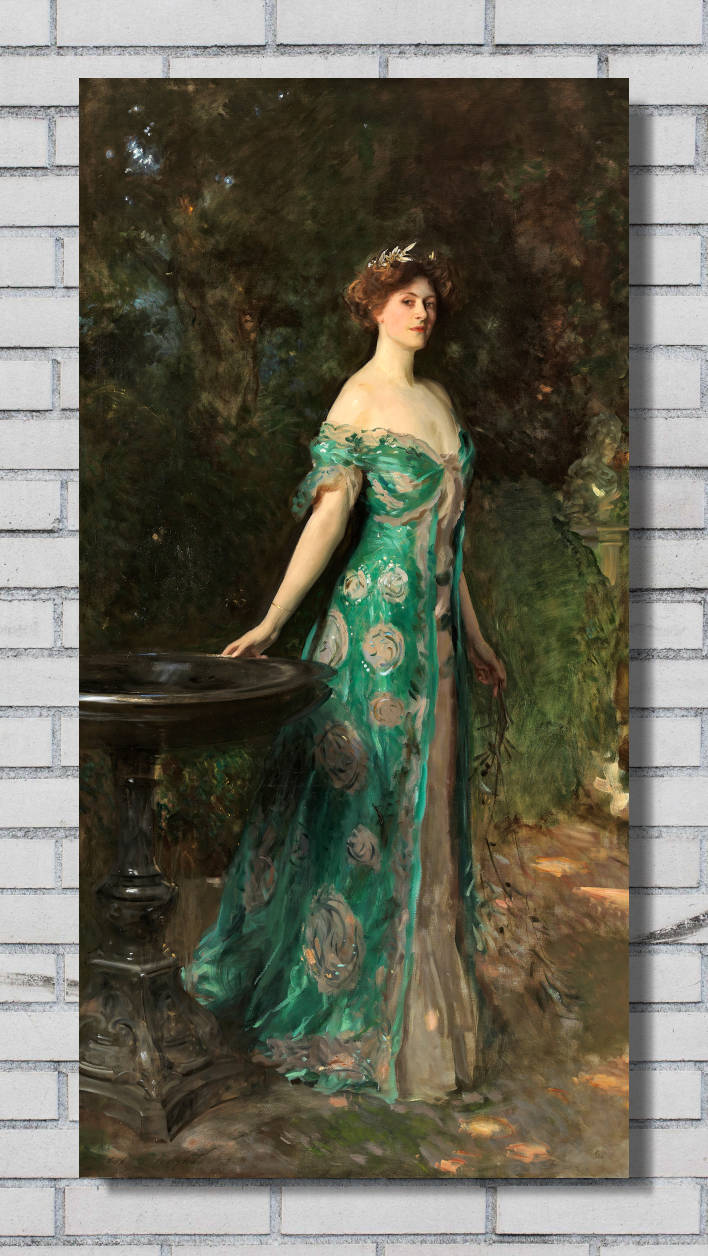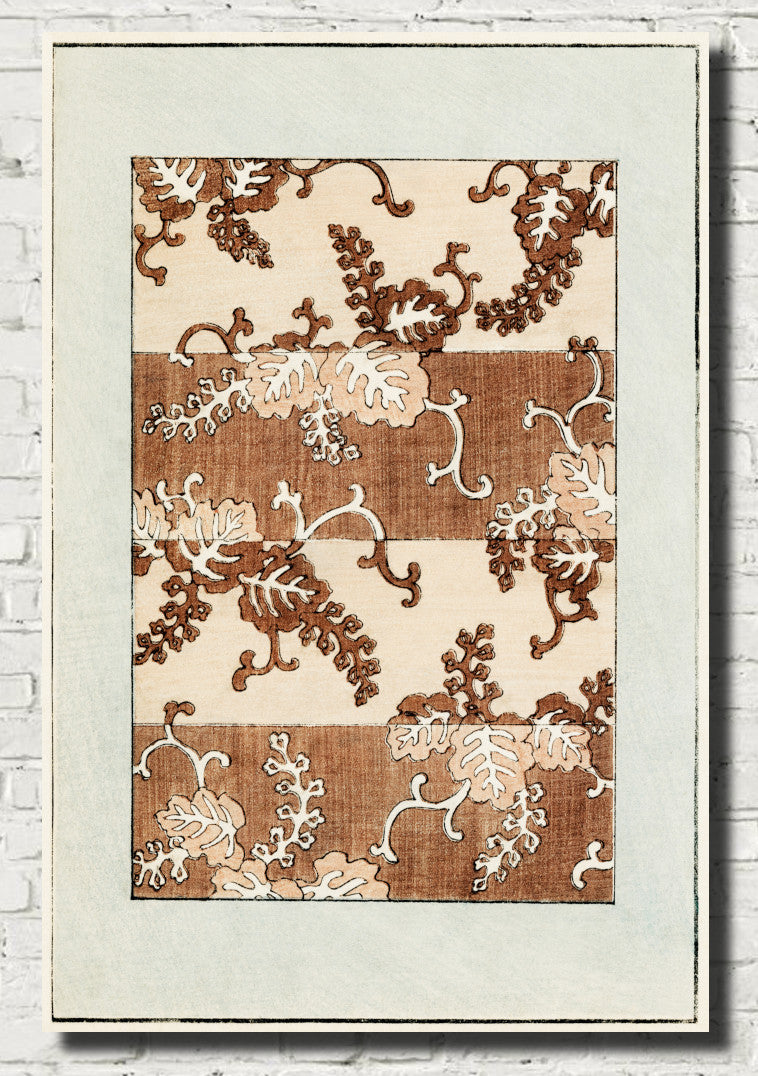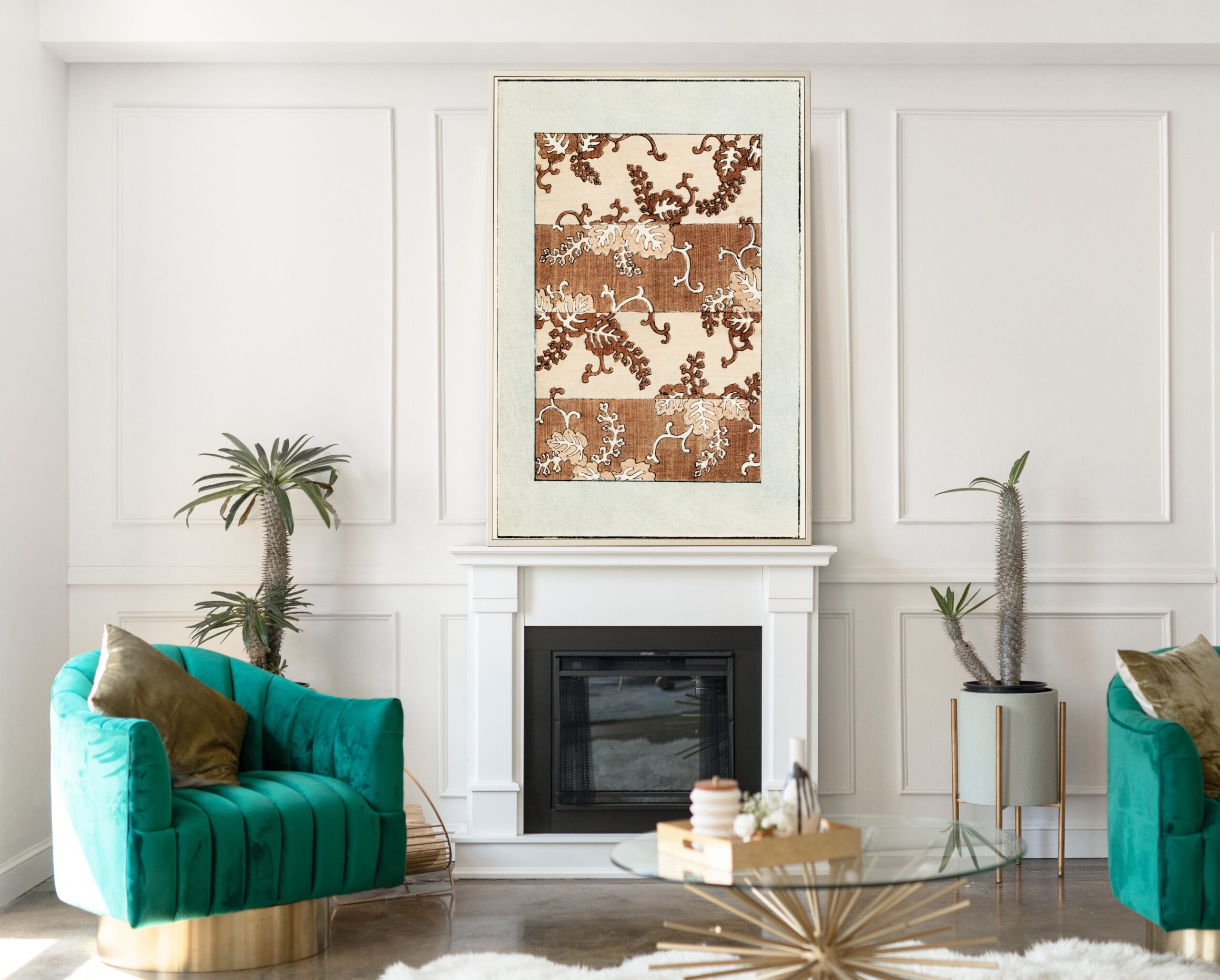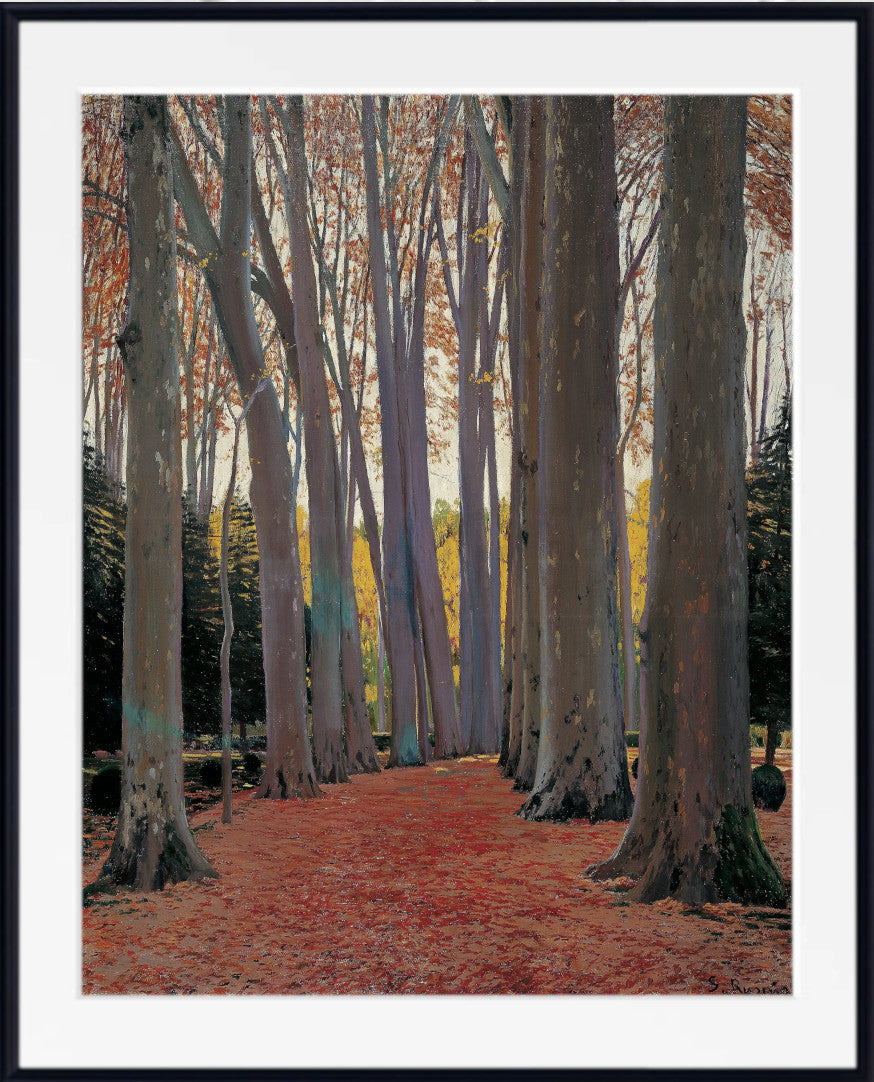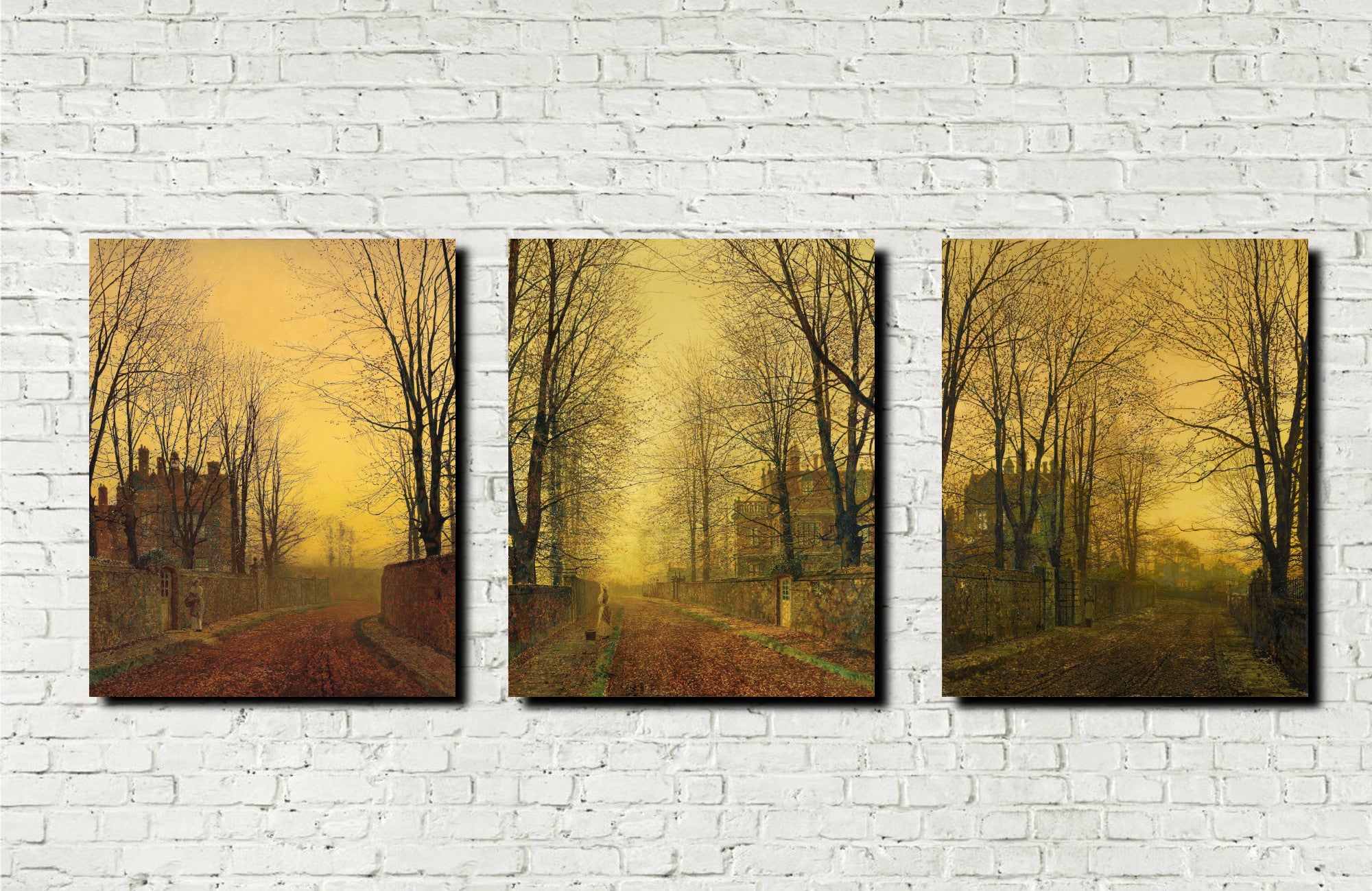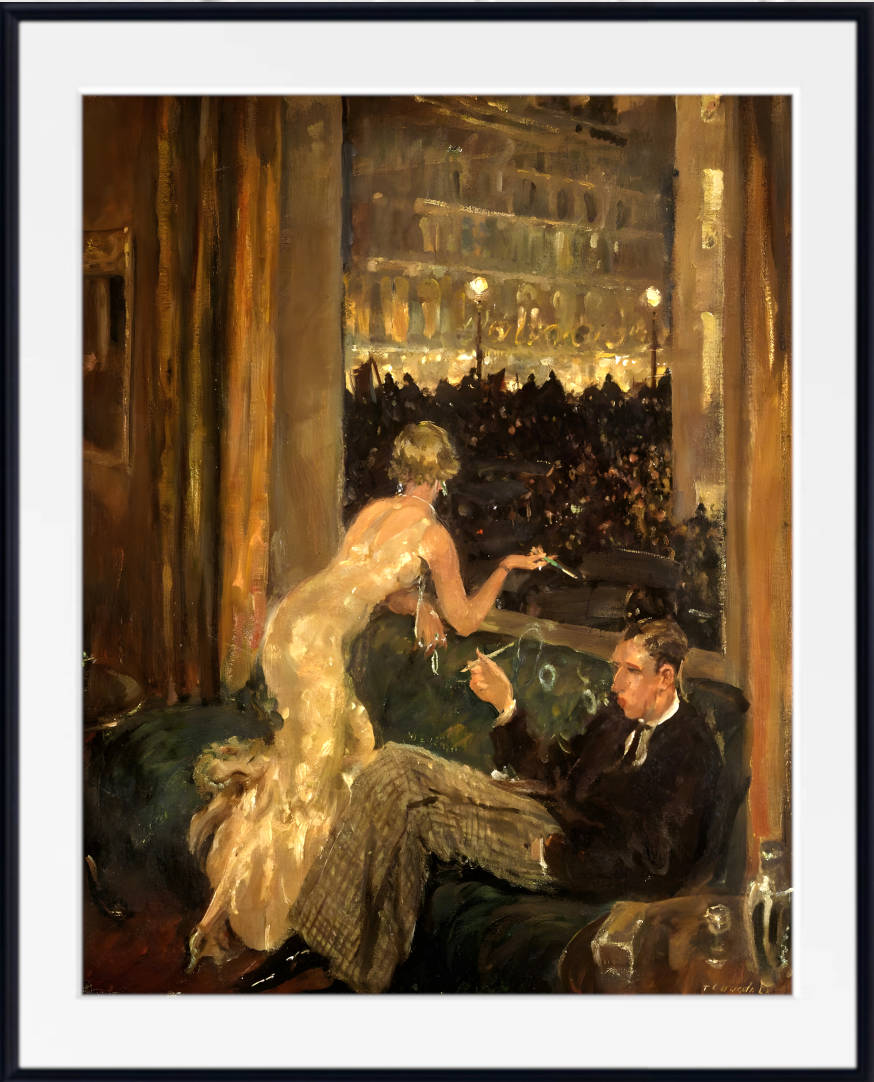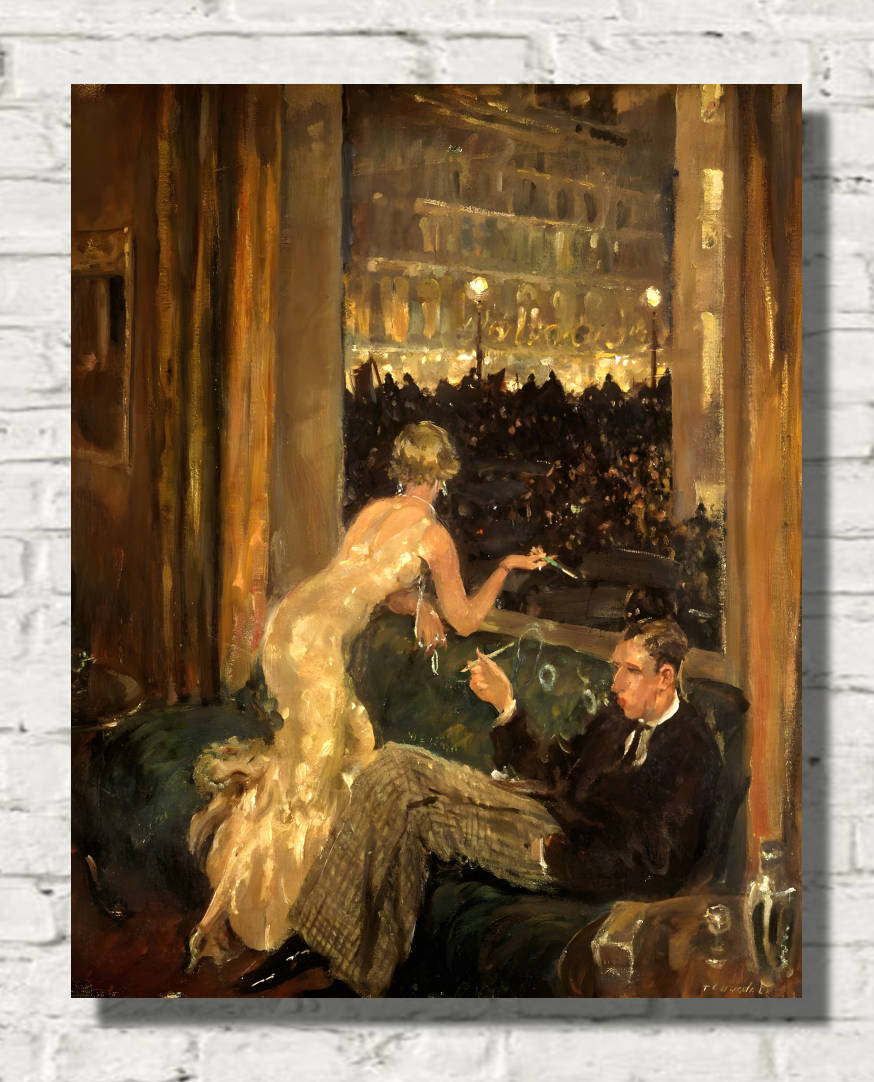Richborough in Fog (1917), John Lavery
John Lavery’s “Richborough in Fog” (1917) is a haunting and evocative oil painting that captures the eerie atmosphere of a British coastal town shrouded in fog during World War I. The painting depicts the ruined Roman fort of Richborough in Kent, England, its imposing silhouette barely visible amidst the dense fog that engulfs the landscape.
Lavery masterfully creates a sense of mystery and suspense, as the viewer is drawn into the painting’s hazy depths. The fog obscures the details of the landscape, leaving only fragments of the fort’s walls and towers visible, their shapes distorted and indistinct. The sky is a uniform gray, devoid of any hint of light or warmth, adding to the overall sense of gloom and foreboding.
The painting’s muted tones of gray, brown, and green reflect the bleakness of the wartime scene. The only splashes of color are the red brickwork of the fort, visible in a few spots, and the occasional glimpse of the blue sea in the distance. The overall effect is one of desolation and isolation, reinforcing the sense of wartime austerity and loss.
The painting’s title, “Richborough in Fog,” adds to the sense of mystery and intrigue. The contrast between the imposing Roman fort, a symbol of power and endurance, and the obscuring fog suggests the fragility of human achievements and the ephemeral nature of time.
Lavery’s painting is not just a depiction of a landscape; it is a powerful evocation of the mood and atmosphere of wartime Britain. The fog symbolizes the uncertainty and fear that pervaded society during the war, while the ruined fort serves as a reminder of the past and the fleeting nature of glory.
“Richborough in Fog” (1917) is a poignant and thought-provoking work of art that captures the essence of a nation at war. Lavery’s skillful use of light, color, and composition creates a haunting and evocative scene that lingers in the viewer’s mind long after viewing.
All prints are made using archival art stocks and UV pigment inks to give up to 200 years life. Prints are sold unframed and unmounted.

